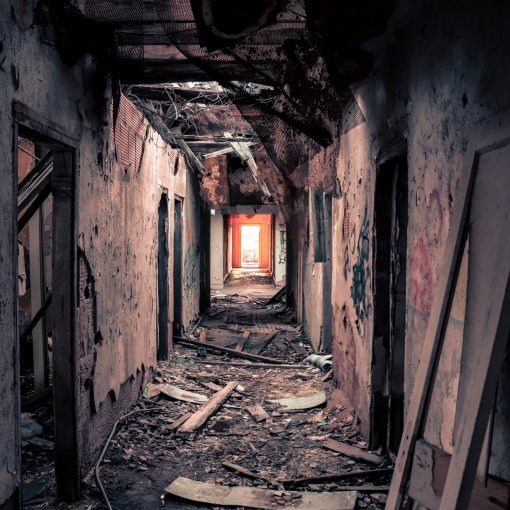Fair warning: a LOT of the links in this blog post will take you to music videos, and a significant number of them are loud. Bear that in mind as you click around.
For this week’s blog post, I thought I’d try something a little different. In the same vein as Grant’s campaign reports, I’m going to do a series of posts as I design a new setting for a D&D 5e game off somewhere in the nebulous future. And like Grant’s series of campaign reports, these are probably going to be somewhat infrequent, but I’ll try to make them fun and worth reading when they do pop up.
Now for some information that may come as a bit of a surprise for some of our listeners that don’t know me outside of the podcast: I enjoy me some heavy metal. I do “top out” before it turns into guttural screaming – I like the singer to actually sing even if it’s a growly singing and I’m fairly mainstream in my tastes (I’m definitely not a music snob and don’t consider myself to be anything even vaguely resembling an expert), but I really enjoy a lot of heavier music. Back when I was a younger man, this was responsible for at least one speeding ticket (oops!) because it’s very easy to speed to hard rock and heavy metal. The music’s energy is infectious, which is one of the reasons I like it so much.
I also enjoy a mix of explicitly-Christian music of the heavier variety and ordinary “secular” music in the same vein.
So what on earth does this have to do with gaming in general and setting design in particular? More than I’d have thought myself until about 9 years ago when I started seeing ads for Double Fine’s game Brutal Legend, a heretofore un-replicated mix of comedy, action, fantasy, and lots and lots of heavy metal tropes. Tim Shafer, the guy in charge over at Double Fine managed to make a game that got by on sheer enthusiasm alone, because as Rock, Paper, Shotgun reviewer Alec Meer wrote about it when it finally came to the PC in 2013, it wasn’t a terribly coherent game – there were a lot of competing game systems, the story felt like acts 2 and 3 got abruptly cut from it, and it generally struggled to execute on any particular set of mechanics. And yet I, like Meer would still recommend it, for reasons Meer summed up very well in his review:
The game’s entire look is predicated on the belief that 80s metal was/is a crazed, anything-goes cartoon, not a tar-black statement of Satanic intent, and by God it’s infectious. I don’t usually feel anything for metal, but when I play Brütal Legend, I bloody love metal to the very pit of my gnarled and jaded soul.
As it pounds and thuds and screeches and bellows, I feel like it’s answering every question I ever had about anything, and afterwards I mourn that it didn’t play a part in my own adolescence, as it did Schafer’s. The game is a love letter to it, in appearance and ethos as much as in its soundtrack.
Brutal Legend was a great, fun, inspiring, idea-filled thing, but I prefer to let comedy happen organically around the table rather than baking it into the setting itself, so a straight-up adaptation wasn’t the way to go. In addition where there are things in the ethos of some of the bands I particularly enjoy that I find redemptive and good, there’s definitely a lot of ideological baggage associated with the genre that I can do without. A significant amount of heavy metal is obsessed with hedonism and darkness for their own sake, and while this can be useful for villains, I have zero interest in running a game where that’s what the PCs are like.
System-wise, I have been enjoying the 5e game Grant is running a LOT, and as often happens when I’m a player in a new system I enjoy, the itch to pick it up from the other side of the GM screen takes hold.
I have a couple of fantasy settings under my belt already: the first was created for my successful D&D 3.5 campaign back in the early aughts, and the other one has only ever seen the light of day as the setting of my published short stories for the Sojourn anthologies, but neither one of those felt like it’d translate well to 5e. The 3.5 setting was a crazypants high fantasy steam-tech one that leveraged the shameless scraping of mechanics from an entire bookshelf of official and third-party d20 books. It had lightning trains, magical gatling guns, powered armor, city watchmen on giant flying gems, magical/steam-tech cyborgs, lost civilizations, entire continents ravaged by magical disaster, and all kinds of other bonkers stuff. The one from my writing is all the way on the other end of the spectrum; extremely subtle in its supernatural elements and is thus far confined to a single city and its surrounding environs. Spellcasting classes just wouldn’t work in that setting – that kind of magic just isn’t in there.
I wanted something different and new, purpose-built to be run in 5e rather than adapted. I am also an avowed lover of kitchen sink settings, so when the wheels started turning on a metal-inspired setting, the spark that started it was backing the post-apocalyptic 5e D&D toolkit called Hellscapes on Kickstarter. Finally, as I alluded to earlier, I’m an unabashed lover of some of the better Christian heavy stuff out there. Back when I was younger, I listened to a lot of Petra and Whiteheart, and these days I also add Skillet and The Letter Black to the list. This set of influences gives me a much larger helping of uplifting and redemptive themes I can stir into the setting, but some of the more mainstream bands (Disturbed, in particular) also are no slouch in the “redemptive themes” department.
So how does one stitch all of this disparate material into a game setting for 5e? Right now I’m on high-level themes.
On the broadest level is a setting with technology that existed on earth no later than the mid 20th century, but still a lot of traditional fantasy themes, classes, and enemies. That doesn’t do much justice to it though, because a lot of the ideas I have are tied up in themes. I want firearms somewhere between the old west and WWI, communications tech that allows for radio, but not cell phones and computers, and it will be a sad thing indeed if vehicle tech doesn’t include hot rods, muscle cars, and motorcycles alongside old-fashioned war horses and fantastic riding beasts. If one of my PCs is a wizard with a six-gun on a motorcycle, I have succeeded.
But that’s not really the “meat” of the setting. I’m looking to create a setting that draws on heavy metal and Christian themes, so a lot of what I’m going to want is less concrete than tech level and bestiary will indicate.
First of all, one of the themes that secular metal and Christianity agree on is a concern for the oppressed and a sense of outrage at oppressors. There are a lot of angry heavy metal songs about how entrenched power structures unfairly grind people down, the injustices of the world, the futility of war, the callousness of wealth and so on. So the setting definitely needs some corrupt entrenched power structures and the PCs need the means to topple them.
Another theme I want to play with is corruption and bondage – start down a dark path and powerful evil forces will start to “help” you whether you want it or not, warping and shaping you as they do and taking more and more of your identity away in the process. This means that evil isn’t just something to fight against, but also at least sometimes something you can free the antagonists from, though they may always be scarred by it. This general idea allows me to account for the relatively gruesome and/or creepy nature of a lot of iconic heavy metal “mascots” like Megadeth’s Vic Rattlehead, but there’s also plenty of room to play with the idea that not everything beautiful is good and not everything frightening is evil – after all, the most common reaction to angels in scripture is terror, so that definitely needs to be in there. Again, this even shows up in album art and music videos. Disturbed’s “The Guy” is basically only ever depicted as a figure who destroys structures of oppression, either alone (quick disclaimer: David Draiman, Disturbed’s singer/songwriter is a Jew, so the use of “messiah” in that video does NOT have Christian context) or by helping ordinary people to rise up.
An overarching theme is that Evil takes and Good gives freely – freedom, life, safety and hope in particular. And this goes both for the cosmic powers and the mortal servants. Good gives life – in the form of healing spells and heroic sacrifice both, for example.
The setting is going to be monotheistic, but it’s going to take some doing to get my tropes right. Massive, towering cathedrals full of stained glass will definitely factor in, but I also want to convey that holy places are peaceful sanctuaries of hope and compassion and not merely the awesome-looking barracks avenging heroes are deployed from.
While I’m on specific things I want to account for, one of the things the Christian metal brings to the list is what I refer to as “Romans 7:19 songs.”
For I do not do the good I want to do, but the evil I do not want to do–this I keep on doing. -Romans 7:19 (NIV)
There are solid pieces of music by Petra, The Letter Black, and Skillet about this theme. The fight against not only external evil, but against one’s own baser nature and the desire to do the wrong thing, even for the right reasons, definitely deserves to be in there.
Christian metal brings the concept that right makes might (rather than the other way ’round) and the concept that virtue can be something of a shield and power source. Actual theology about this gets far more complicated, but hey, this is a fun gaming setting and it’s a little off-the-wall anyway. It goes in!
To depart from the more spiritual/philosophical themes for a moment, hard rock and metal are high-energy and exhilarating. In gaming terms that means lots of action like fights, chases, or rushing to be somewhere on time, and it also means interesting descriptions. Source material like I’m using is dramatic so that’s a consideration. Thought will definitely need to be put into making things look cool and seem at least a little bit over-the-top.
I’ll be interested to hear your thoughts on this project, especially early on as I am.





One thought on “Setting Design Report, Part 1”
Following this development with interest and curiosity. 🤘